Key takeaways:
- 5G technology offers significantly faster speeds and low latency, transforming real-time applications such as online gaming and remote surgeries.
- IoT devices enhance daily life through automation, seamless interconnectivity, and real-time health tracking, significantly impacting home and city management.
- Security challenges arise from the increased number of connected devices, necessitating standardized protocols and user education to mitigate risks such as data breaches.
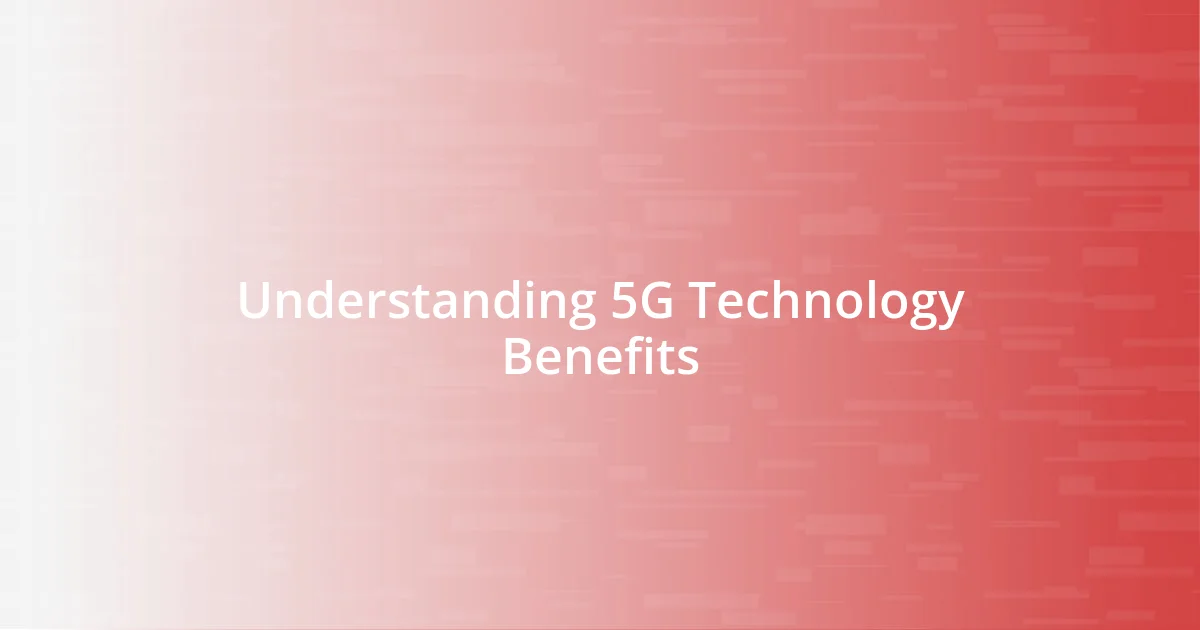
Understanding 5G Technology Benefits
One of the most exciting benefits of 5G technology is its impressive speeds, which can be up to 100 times faster than 4G. I remember when I first experienced the difference while streaming a movie; it felt like I was tapping a button and the video was instantly available without any buffering. Isn’t it mind-boggling to think how much time we can save with such rapid connectivity?
Moreover, the low latency of 5G is a game changer for real-time applications, such as online gaming and remote surgeries. I often find myself contemplating how crucial this low latency can be in situations where every millisecond counts. For example, imagine a surgeon performing an operation via robotics from thousands of miles away; the speed of information transfer can literally be a matter of life and death.
Additionally, 5G technology supports a much higher density of connected devices compared to its predecessors. Have you ever felt overwhelmed by the multitude of smart devices in your home? With 5G, I see a future where seamless communication between these devices won’t just be a dream but a reality, enhancing our daily lives in ways we can hardly imagine.
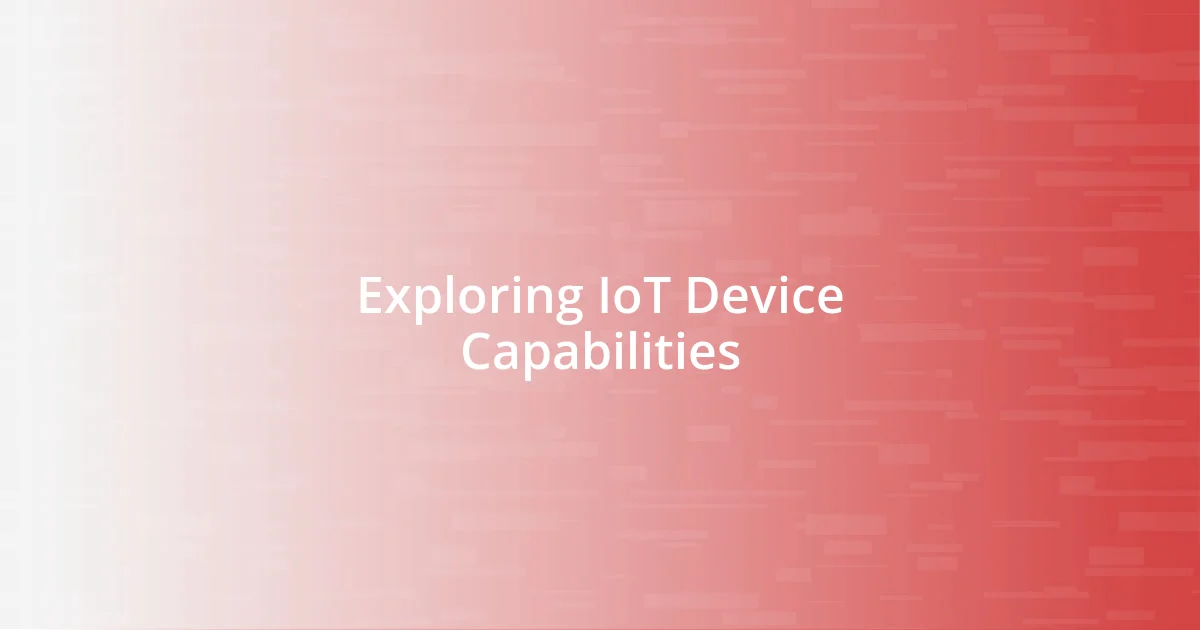
Exploring IoT Device Capabilities
As I dive deeper into the possibilities of IoT devices, I can’t help but marvel at their diverse capabilities. These devices, from smart thermostats to wearables, are becoming our personal assistants, helping us gather data and automate tasks. I remember setting up my smart home system; watching it learn my preferences felt like having a little magic at my fingertips. Just imagine how this technology continues to transform our everyday experiences.
Here are some of the impressive capabilities of current IoT devices:
- Data Collection: IoT devices gather real-time data to track usage patterns, enhancing efficiency.
- Automation: They can automate tasks, reducing the need for manual operation and saving time.
- Remote Monitoring: Many IoT devices allow for monitoring from afar, ensuring security and comfort even when we’re not home.
- Interconnectivity: These devices communicate with each other seamlessly, creating a cohesive smart ecosystem.
- Health Tracking: Wearable IoT devices provide continuous health monitoring, offering insights that can lead to better health management.
Thinking about these advancements really excites me; the impact is vast and far-reaching, touching nearly every aspect of our lives.
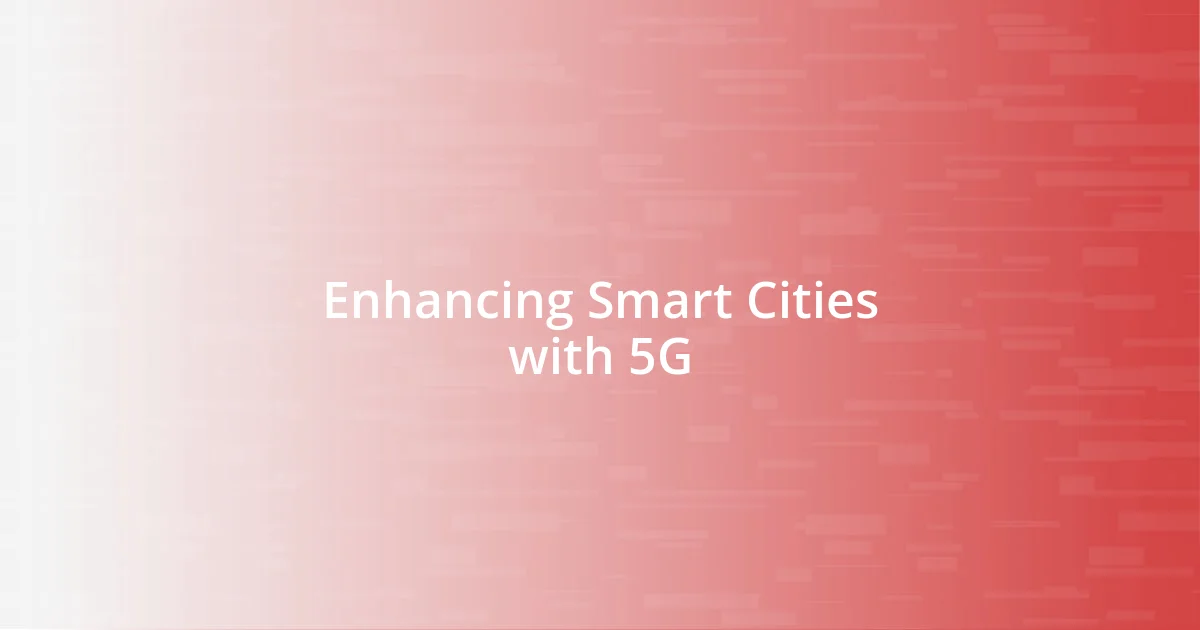
Enhancing Smart Cities with 5G
Enhancing smart cities with 5G technology brings a transformative power that I find truly inspiring. Picture bustling streets filled with sensors gathering real-time data on traffic and weather conditions. I remember walking through a city where everything seemed to hum with efficiency, a result of interconnected systems working together seamlessly. With 5G, the potential for optimized public transportation and smart traffic management can ease congestion, making urban living more enjoyable.
The integration of 5G in smart cities means not only faster communication but also enriched public safety. Recently, I learned about smart streetlights that can detect accidents and emergencies, alerting authorities instantly. It’s remarkable to think that such a quick response could save lives. I often reflect on how empowering these innovations can be, giving cities the ability to respond and adapt to challenges in real-time.
Moreover, the impact of 5G extends to energy management in smart cities. I shared a moment with a friend who was amazed by how smart grids adjust energy distribution based on real-time consumption. This is not just about saving energy; it’s about creating a sustainable future. With smart meters and efficient resource management powered by 5G, cities can significantly reduce their environmental footprint. It’s a step toward a greener planet that I truly support.
| Benefit | Description |
|---|---|
| Faster Communication | 5G enables near-instantaneous data transfer within smart city systems. |
| Public Safety | Integrating smart technology enhances emergency response times and efficiency. |
| Energy Management | Smart grids empowered by 5G allow for real-time monitoring and energy optimization. |
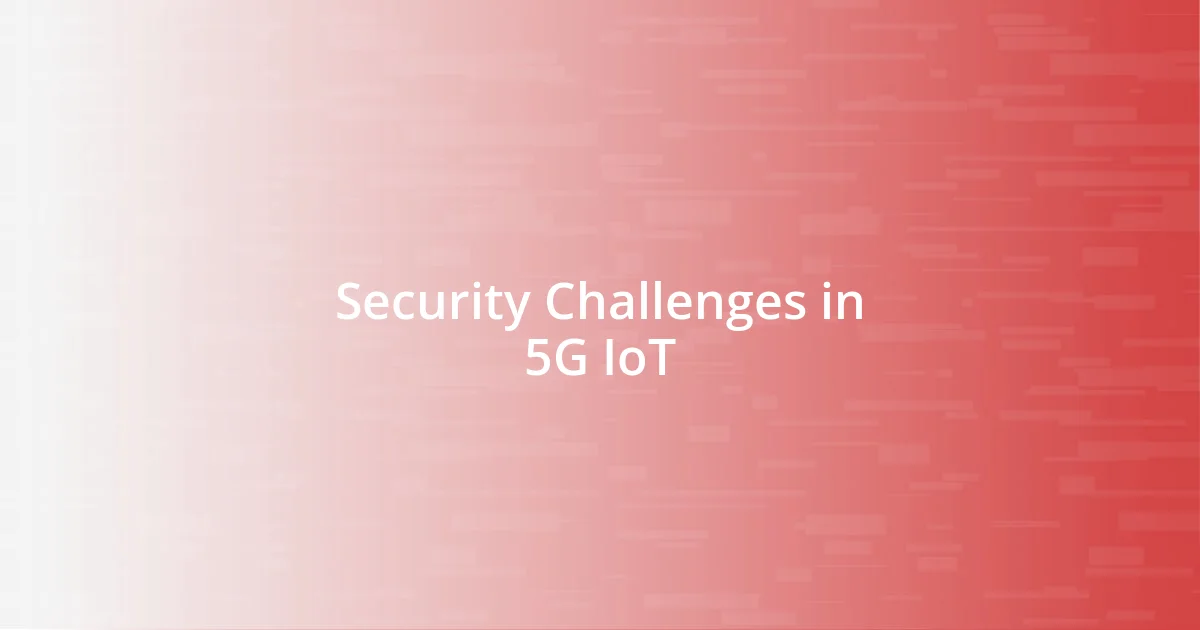
Security Challenges in 5G IoT
Security in the world of 5G IoT is a nuanced topic that often keeps me up at night. The sheer volume of connected devices increases the potential attack surface for cybercriminals. I remember reading about a smart home device that was compromised, leading to unauthorized access to the owner’s network. It made me wonder—how many people truly understand the risks they’re exposed to as they invite these technologies into their lives?
One of the key challenges is the lack of standardized security protocols. Each IoT device often implements its own security measures, which can create vulnerabilities when devices communicate. In my experience, I’ve seen this firsthand when trying to integrate various devices from different manufacturers. It felt like I was assembling a puzzle with pieces that didn’t quite fit, making me question whether my data was safe while these devices interacted.
Another noteworthy concern is the potential for data breaches. As we know, IoT devices generate massive amounts of data. I can’t help but feel a bit anxious every time I think about how much personal information is being transmitted and stored. What happens if that data falls into the wrong hands? In my opinion, it’s crucial for users to educate themselves and stay informed about best practices for securing their devices. After all, in a world where connectivity is key, we must advocate for our own digital safety.

Future Trends in 5G IoT
The future of 5G IoT integration is leaning heavily towards a more seamless interaction between devices. I’m particularly excited about the possibility of everyday items talking to each other—imagine your refrigerator notifying you when you’re low on groceries while suggesting recipes based on what you have at home! This level of interconnectivity could transform not just our homes but also the way we manage our daily tasks. It raises the question: how can such advancements simplify our lives even further?
Another trend I see emerging is the increased use of AI alongside 5G IoT. I often think about how AI can enhance decision-making in real time, especially in areas like smart healthcare. For instance, wearable health monitors could instantly relay information to doctors, leading to quicker diagnoses. Reflecting on this, I can’t help but marvel at the potential for preventative medicine. It puts a personal touch back into healthcare, which has become so impersonal.
Additionally, sustainable practices will play a pivotal role in this evolution. I remember a sustainability conference I attended where experts discussed how integrating 5G with IoT could optimize resource use in agriculture. Farmers could use sensor data to understand soil conditions and water usage, ultimately leading to higher yields and reduced waste. It makes me optimistic about the prospect of feeding a growing population while respecting our planet. Doesn’t that just resonate with the idea of balance and growth?
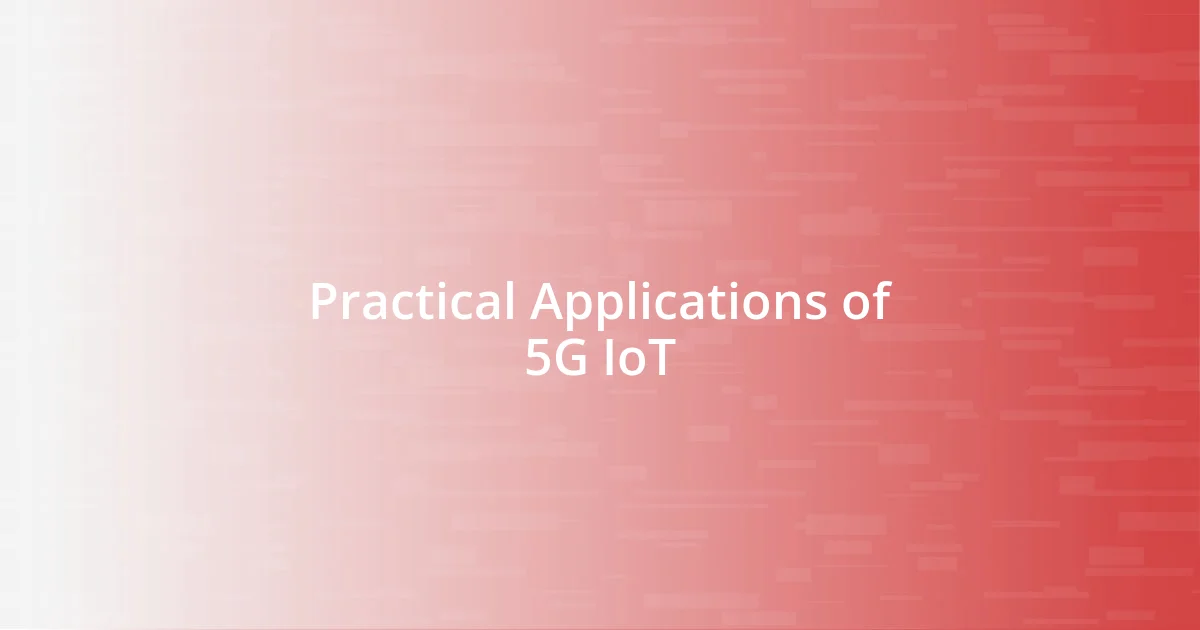
Practical Applications of 5G IoT
The practical applications of 5G IoT are already being felt in various sectors, and it’s fascinating to witness how they unfold. For example, I recently came across a case where municipalities are using connected sensors to monitor air quality in real-time. It struck me how this technology not only helps in maintaining a healthier environment but also empowers communities to make informed decisions that could improve public health. Isn’t it remarkable how a simple enhancement in connectivity can lead to such far-reaching benefits?
In the healthcare sector, the integration of 5G with IoT devices is a game changer. I think back to a conversation I had with a friend who works as a nurse; she mentioned that with 5G, patient data can be transmitted instantly to doctors. This capability drastically reduces response times in emergencies, which could be a matter of life and death. It makes me ponder: how many lives could be saved if every hospital adopted these technologies?
Another intriguing area is smart transportation systems. Imagine being stuck in traffic and receiving real-time updates on better routes directly to your phone—this is becoming a reality through 5G IoT! I can vividly picture myself in moments of frustration on congested roads, and how such innovations could ease these everyday struggles. The potential for improving commuter experiences while reducing congestion is something we should all be excited about. Isn’t it about time we harnessed technology to make our lives a little easier?












